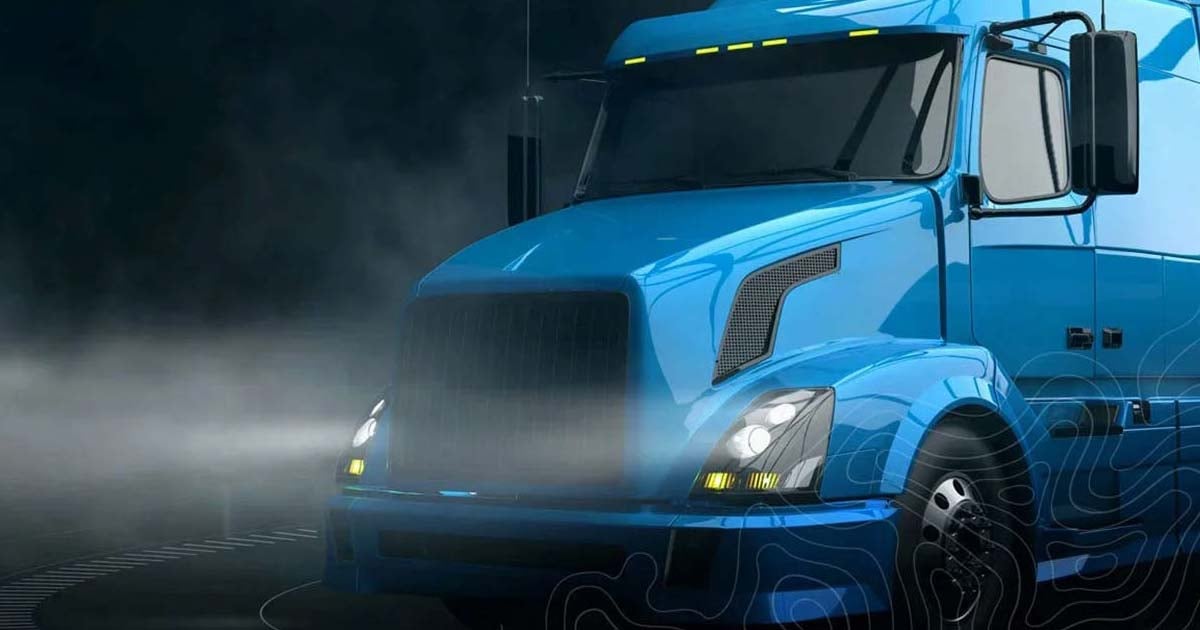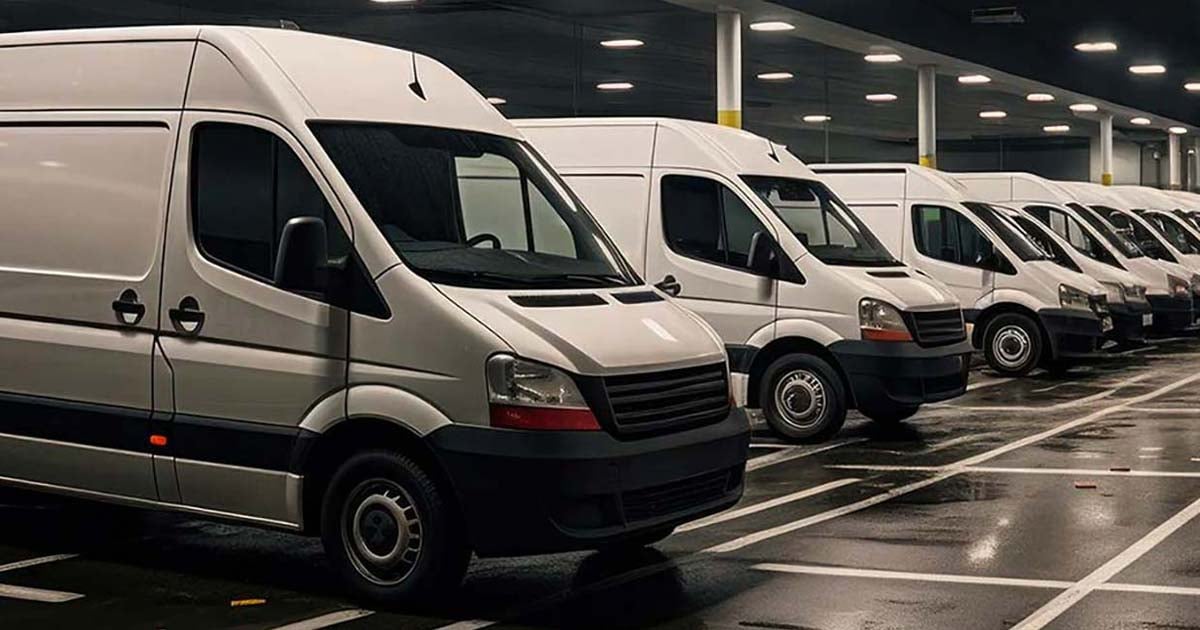May 20, 2025 | BY Dan Boaz
Truckload Freight Quote
In the logistics and trucking industry, shippers rely on accurate freight quotes to plan shipments and control costs. A freight shipping quote is an estimate of the shipping cost for a particular freight load, based on details like the shipment’s size, weight and distance.
Share this article
Obtaining a precise quote upfront is crucial for budget planning and avoiding surprises later. This article explains what a freight quote is, why it’s important, and provides a step-by-step guide to getting accurate rates for trucking (LTL, FTL, reefer, flatbed), expedited freight, and air shipping.
WHAT IS A FREIGHT SHIPPING QUOTE?
A freight shipping quote is an estimate of the total cost to ship your freight, given by a carrier or logistics provider based on the information you provide about the shipment. In essence, it’s a breakdown of expected charges for moving goods from origin to destination. The quote typically considers factors such as origin/destination, mode of transport, shipment dimensions and weight, freight class (for LTL freight), and any special services required. If all the details provided are accurate, the final shipping cost should closely match the quoted amount. However, if the information is incomplete or incorrect, carriers may apply adjustments (for example, re-weighing the freight or reclassifying it), leading to a higher final bill.
TALK TO AN EXPEDITOR NOW
Get a Quote in Minutes for Your Time-Critical Freight Needs

Information Needed to Obtain a Freight Quote
To get an accurate freight quote, you will need to provide specific information about your shipment. The more complete and precise the information, the more reliable your freight quote will be. Be prepared with the following details before requesting a quote:
- Origin and Destination: The pickup and delivery locations (addresses or at least zip codes). Distance and route influence the cost, so accurate locations are important.
- Shipment Mode and Service Level: Specify the type of shipping required – for example, Less Than Truckload (LTL freight) vs. Full Truckload (FTL shipping), or if it’s an expedited service, air freight, etc. Also note any specific equipment needed, such as a dry van, refrigerated truck (reefer), flatbed, etc.
- Shipment Dimensions and Weight: Provide the weight of the shipment and dimensions (length, width, height). If the freight is palletized, include the pallet count and dimensions. Accuracy is critical – freight rates, especially for LTL and air freight, often depend on weight and size. Never guesstimate these figures; use a scale and measuring tape to ensure exact numbers.
- Commodity and Freight Class: Describe what you are shipping. For LTL shipments in the U.S., you may need to provide a freight class (a classification number defined by NMFTA) or at least the commodity type. The freight class or commodity helps determine the rate (based on density, fragility, value, etc.).
- Packaging and Handling Units: Indicate how the freight is packaged – e.g., on pallets, in crates, in drums – and the number of handling units. This affects how the carrier will load and handle the shipment.
- Accessorial Services: Note any special services or accessorials needed. For example, do you need a liftgate at pickup or delivery? Is either location residential or have limited access? Will the driver need to call ahead, perform inside delivery, or handle hazardous materials? These extras should be disclosed upfront as they can incur additional fees.
- Desired Transit Time or Service Speed: If you require expedited shipping or have a firm delivery deadline, include that information. Carriers may offer options for standard vs. expedited freight services, and this will affect the quote.
How to Get a Quote for Trucking
Getting a quote for trucking freight involves reaching out to carriers or intermediaries that handle over-the-road shipments. Whether you need an LTL freight quote for a small shipment or an FTL quote for a full truckload, the process is similar – you must provide the shipment details and request pricing. Here are some key considerations for different trucking services:

Hot Shot Trucking
Hot shot refers to urgent, small-to-medium sized loads usually moved by smaller trucks (like a pickup pulling a flatbed gooseneck trailer, or cargo van/sprinter van for smaller items). Hot shot services are often used for time-sensitive deliveries, such as machinery parts needed to prevent a factory downtime, or emergency supplies. To get a quote for hot shot trucking, you typically contact a specialized hot shot carrier or an expedited freight broker. Many expedited carriers (and brokers) operate 24/7 and can provide quotes quickly if you call or submit an online request form with the details. You’ll need to provide what you’re shipping, the size/weight, and how fast it needs to get there (e.g., same-day, overnight).

Team Drivers (Expedited Truckload)
For longer distance full-truckload shipments that are urgent, requesting a team driver service is a solution. A team means two drivers in one truck who can drive in shifts, allowing the truck to keep moving almost nonstop (except for fuel and quick breaks). This effectively cuts the transit time roughly in half compared to a solo driver for cross-country moves.
To get a quote for a team-driver truckload, you can ask a freight broker or carrier that offers team service. Make sure to specify that you require team expedited service. The quote will be higher than a standard FTL rate (since you’re essentially paying for two drivers and premium service), but you’ll get a much faster delivery. Many large truckload carriers and logistics providers offer team service options – often, their online quote forms will have a checkbox or option for expedited/priority or you can note it in a comments field.

Dedicated Truck or Exclusive Use
Sometimes called a dedicated expedite or exclusive use vehicle, this means you are paying for a vehicle (be it a van, straight truck, or full tractor-trailer) to handle only your shipment, on your schedule, without any co-loading or intermediate stops. Essentially, it’s chartering a truck to go directly from point A to point B for you. Hot shots are one form of dedicated truck (smaller vehicle), but you can also get a dedicated 53’ truck if you have a large urgent load or want to completely avoid any LTL hubs. Getting a quote for a dedicated truck is usually done via an expedited freight broker or directly through a 3PL/carrier offering that service. Provide the origin, destination, time frame for pickup/delivery, and describe the freight. The provider will calculate a rate that accounts for the entire trip (and often the fact that the truck may return empty). For local or regional shipments, this could be a straight truck or cargo van dedicated to you; for longer haul, a full semi-truck. Dedicated expedited trucks guarantee fastest road transit possible because the truck doesn’t deviate or take on other loads. It’s the most expensive ground option but useful for critical shipments. Quotes for dedicated trucks might not be “instant” on a website since they may require coordination—often you’ll get a response by phone or email shortly after your request, due to the urgency these are handled with high priority.

How to Compare and Evaluate Freight Quotes
- Price vs. Service Trade-offs
- Carrier Reliability and Quality
- Transit Time
- Included Services and Special Requirements
- Insurance Coverage and Liability
- Customer Service and Technology
Price vs. Service Trade-offs
Cost is important, but the cheapest freight quote isn’t always the best option. A very low quote might come from a carrier with slower transit or lower reliability. Consider what the quote includes for the price – is it door-to-door with all fees, or might there be hidden extras? Look at the total cost in context of what you’re getting. Sometimes paying a bit more up front results in savings later (fewer delays, less risk of damage, better service). Aim for the quote that offers the best value, not just the lowest number.
Carrier Reliability and Quality
Investigate the carrier or service provider behind each quote. Even if a carrier offers a low rate, it means nothing if they consistently deliver late or damage freight. Late deliveries or damaged goods can cost you customers and additional money. Check the carrier’s reputation or performance metrics if available. Factors to consider include on-time delivery rate, claims ratio (for loss/damage), tracking technology, and customer service responsiveness. Many 3PLs and brokers provide a vetted network of carriers, which can give some assurance of quality. If you’re unfamiliar with a carrier, it could be worth a quick search or asking your broker about their service record.
Transit Time
Pay attention to the estimated transit times on the quotes. One quote might be cheaper but take two days longer, for example. Decide if the delivery deadline allows for a slower service or if you need the faster (possibly pricier) option. Also, consider variability – some low-cost carriers might have less predictable transit times (more potential for delays). If your shipment is time-sensitive, prioritize quotes from carriers known for consistent, fast transit, even if they aren’t the lowest cost. As the saying goes, time is money – a delay could cost more than you saved with a slower carrier.
Included Services and Special Requirements
Not all quotes are apples-to-apples. One LTL quote might include a liftgate fee or insurance, while another does not. Check which services are included or excluded. If you have special requirements – e.g., temperature control, hazardous materials, guaranteed delivery, white-glove service – ensure the quote addresses those. Select a provider that can meet all your needs. For instance, if one quote is a bit higher but that carrier can handle hazmat properly or provides inside delivery, it might be the safer choice than a slightly cheaper carrier that lacks those capabilities.
Insurance Coverage and Liability
Consider the level of insurance or liability coverage associated with each quote. Carriers have different liability limits. A very cheap freight quote might come with minimal carrier liability for loss or damage. If you’re shipping high-value goods, you may need to purchase additional cargo insurance or choose a carrier with higher default coverage. It’s important to know the difference between carrier liability and full shipment insurance. When comparing quotes, factor in the cost of insurance if it’s not included – a quote that’s slightly higher but includes full coverage could actually be a better deal than a bare-bones quote plus the separate cost of insuring the shipment.
Customer Service and Technology
This is more intangible, but consider how easy it is to work with the quoting party. Do they offer a convenient TMS (Transportation Management System) or tracking tools for you to monitor your shipment? Can you easily get support if something goes wrong? A carrier or broker with good technology (online tracking, automated alerts) and solid customer support can save you a lot of stress. If one quote is through a platform that lets you book and track easily, and another requires lots of manual paperwork, that difference might sway your decision even if prices are similar. Time saved is value. Similarly, the responsiveness of the provider (did they provide the quote quickly and answer your questions?) can indicate the level of service you’ll get once you’re a customer.
Where to Get Freight Quotes
Shippers have several avenues to obtain freight shipping quotes. Each source has its pros and cons, and often companies use a combination of these methods. Here’s an overview of where you can get freight quotes and what to expect from each option:
Direct from Carriers (Trucking Companies & Airlines)
Freight Brokers
Third-Party Logistics Providers (3PLs)
Digital Freight Platforms and Marketplaces
Frequently Asked Questions
What information do I need to provide for an expedited shipping quote?
When requesting a quote or booking for expedited freight, it’s essential to come prepared with all relevant shipment details. This includes the origin and destination ZIP codes, exact dimensions and weight of the freight, and a clear description of the commodity being shipped. Be sure to specify your required delivery timeframe or any critical deadlines. If there are special handling needs—such as temperature control, hazardous materials, high-value cargo, or a need for a specific vehicle type—those should be stated upfront.
Sharing this information in full enables the carrier or broker to match your shipment with the most appropriate equipment and route, whether that’s a sprinter van, straight truck, or full tractor-trailer. Don’t forget to include accurate contact information for both pickup and delivery, along with any on-site constraints, like limited access, absence of a loading dock, or the need for a liftgate. The more detailed and accurate your information, the faster and more precise your expedited freight quote will be.
When should I use expedited ground vs. expedited air freight?
Choosing between ground and air for expedited shipping depends on three key factors: distance, urgency, and budget. For domestic shipments over short to medium distances, expedited ground is typically the most cost-effective and efficient solution. When a team of drivers can cover the route within one or two days—such as a same-day or overnight delivery within a 500–1,000 mile radius—ground expedited services are often the preferred option. They provide rapid transit without the high costs associated with air freight and are well-suited for critical deliveries that need to move quickly but don’t justify the premium of air transport.
Air expedited shipping, by contrast, is ideal for situations where even the fastest truck can’t meet the required deadline. It’s the go-to choice for long-distance domestic shipments that must arrive within hours, or for international and intercontinental moves where trucking simply isn’t viable. When shipping cross-country in a matter of hours or needing to deliver to another continent overnight, air freight—whether via commercial cargo flights or dedicated air charter—is the fastest and most reliable option. That speed comes at a premium, however, so air is generally reserved for the most time-sensitive shipments where ground transit isn't fast enough. In short, choose ground expedited when trucks can meet your deadline affordably, and opt for air freight when time is too tight or the distance too great for ground to be feasible.
What is a dedicated truck service and how does it relate to expedited shipping?
Dedicated truck service refers to the use of a truck and driver assigned exclusively to your shipment, without sharing space with any other freight. This approach is a key method used in expedited shipping, as it allows your cargo to move directly from pickup to delivery without intermediate stops, transfers, or delays. With no need to wait for other loads or make additional drop-offs, the truck operates solely on your schedule, making it one of the most reliable ways to meet urgent delivery deadlines.
In practice, many expedited ground shipments are built around this dedicated truck model—whether it’s a sprinter van, box truck, or full tractor-trailer. The main advantage is control: the route, timing, and handling are tailored entirely to your shipment’s needs. Because your freight is the only cargo on board, there’s reduced risk of damage or loss, and handling is minimized. Dedicated service is especially useful for high-value, fragile, or time-critical goods. In essence, it’s a premium solution that delivers speed, security, and peace of mind—your freight gets top priority, and the vehicle runs nonstop to your destination.
What is the difference between a freight carrier, freight broker, and a 3PL provider?
In the logistics industry, freight carriers, brokers, and 3PLs play different roles:
-
Freight Carrier: This is the company that actually owns the trucks (or other transport assets) and physically moves your freight. Examples of carriers are trucking companies like XYZ Trucking or national LTL carriers. When you book with a carrier, you’re dealing directly with the company that will dispatch a truck and driver to haul your shipment.
-
Freight Broker: A broker acts as an intermediary between shippers and carriers. Brokers do not typically own their own trucks; instead, they have a network of carrier partners. A freight broker will find an available carrier to move your load and arrange the shipping on your behalf. Essentially, brokers help match your shipping needs with a carrier for a commission or fee. They can save you the time of searching for capacity, especially in the spot market or for one-off loads.
-
3PL (Third-Party Logistics) Provider: A 3PL can encompass freight brokerage services but often provides a broader range of logistics solutions. 3PLs might handle transportation management, warehousing, fulfillment, and other supply chain functions in addition to arranging carriers for shipments. They act as an outsourced logistics department for your company. Some 3PLs are non-asset-based (meaning they rely on carriers and don’t own trucks, much like brokers), while others may have their own assets or dedicated fleets. In summary, a 3PL is generally a more comprehensive partner that can manage end-to-end logistics, whereas a freight broker is specifically focused on finding trucking capacity for your shipments, and a carrier is the entity that physically carries the freight.
Is expedited freight shipping worth the cost for my business?
How are oversized or overweight loads handled in trucking?
Do I need freight insurance, and what does it cover?
Which industries often rely on expedited freight?
Should I use a freight broker or contact a carrier directly for expedited shipping?
How much faster is expedited shipping compared to standard transit times?
Expedited shipping offers a significantly faster alternative to standard transit, reducing delivery times by a substantial margin. In general, any service that shortens the typical delivery schedule is considered expedited. For instance, a cross-country ground shipment that would normally take five business days might arrive in just 2–3 days with an expedited option—cutting the timeline nearly in half. Similarly, a regional delivery that usually takes two days could be completed next-day or even the same day, depending on the urgency and availability.
The time savings vary based on the shipment’s distance, route, and mode of transport. Air expedited services, for example, can turn what would be a week-long ocean freight journey into a 24-hour delivery window. While exact timelines differ by lane, most expedited freight solutions deliver in about half the time—or better—compared to their standard counterparts.

